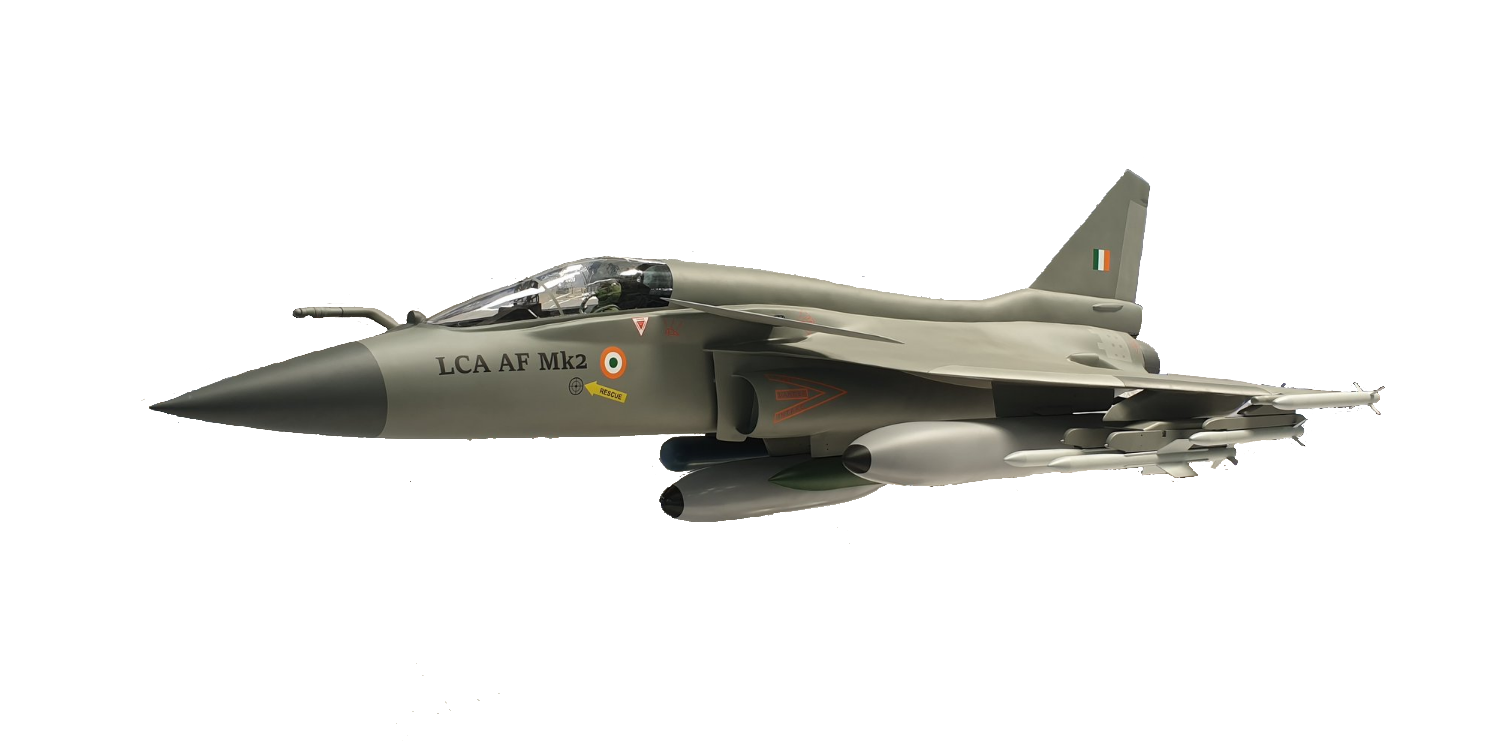When the Indian Air Force is taking a long and hard look at its capabilities to fight “future wars,” the Indian government has finally given its nod to developing cutting-edge, indigenously built Tejas Mark 2 aircraft.
On August 31, India’s Cabinet Committee on Security (CCS), headed by Prime Minister Narendra Modi, approved the program to develop the LCA Mark 2 multirole fighter jet, a more capable and potent variant of the LCA Tejas indigenous fighter aircraft. The comprehensive design review (CDR) was accepted in December last year.
The approval comes more than a month after the Indian Air Force Chief V.R. Chaudhari announced in July that the service would be inducting six squadrons of Light Combat Aircraft Tejas Mark 2 jets. He also stated that the IAF would decide on an additional number of these aircraft once production began.
According to a report by Hindustan Times, the government has approved roughly 10,000 crores or $1.4 billion for the project. The LCA Mk-2 aircraft is expected to make its first flight in two years, setting the stage for its production and completion by 2027.

The approval for the Mk2 coincides with India’s quest to find buyers for its LCA Tejas. The indigenously developed aircraft has emerged as a top contender for the Malaysian fighter jet contract, as previously reported by EurAsian Times. In addition, the Argentine Air Force has also shown interest in the Indian fighter.
The LCA Mk1 is already in service, and the Indian Air Force will receive 83 of the more powerful LCA-Mk1A aircraft it bought in February 2021 by the end of this decade. The first three aircraft are expected to be delivered by 2024, followed by 16 per year for the next five years.

The decision for the Mk2 variant is significant as India is perpetually faced with a threat from its belligerent neighbor, China.
Recently, the PLA fighter jets made unprecedented and provocative sorties close to the flashpoints along the disputed Line of Actual Control (LAC). The IAF currently has fewer aircraft than required for combat.
The Tejas Mark 2 fighter will replace the Jaguar and Mirage 2000 fighters when they are phased out after ten years. In addition, the development of Tejas Mark 2 will also come as a shot in the arm for India’s indigenization effort or ‘Atmanirbhar Bharat’ scheme.
Tejas Mark 2 – Bigger And Better
The Mk-2, a 4.5th generation fighter, is expected to be the most sophisticated Tejas variant designed and manufactured domestically by the Aeronautical Development Agency (ADA).
It will have a more potent engine, i.e., the American GE-414, a more powerful radar, better avionics & electronics, and it will also be able to carry more armaments.
Experts have contended that the Tejas Mark 2 is no longer a light combat aircraft but a substantially more capable and larger Medium Combat Aircraft due to its 1.5-meter longer length and higher performance engine.
?TEJAS MK2 project receives formal Govt sanction with ₹10,000 crore.
➡️ PM Narendra Modi-led Cabinet Committee on Security (CCS) cleared the project to develop #TejasMK2
➡️ Timeline- rollout by end of 2022(Nov) or first quarter 2023, first flight 2024, production line-2027 pic.twitter.com/hb3qLNERwe
— Gunjan kumar (@GunjanxD) September 1, 2022
The fighter’s wings have been stretched outward, but their size has not changed; therefore, the aircraft’s wing span has increased by 300 mm. Adding a canard in front of the wings gives it a look similar to modern fighter jets such as the Sukhoi 30MKI, Eurofighter, or Rafale.
The Mk2 variant of Tejas will be armed with weapons like the Scalp, Crystal Maze, and Spice-2000. It will be armed with indigenous Astra Mark 1 and Mark 2 missiles for air-to-air combat. The Rudram anti-radiation missiles, tested by the DRDO’s Defense R&D Laboratory (DRDL) in Hyderabad, will also be included.
The Tejas Mk-2 will be guided by the ‘Made in India’ Uttam AESA radar. According to reports, this indigenous radar is sufficiently advanced to provide a competitive edge over the Israeli-made radars installed on earlier Tejas models.

The Uttam radar is also said to detect and block hostile electronic warfare (EW) attempts, significantly improving the fighter jet’s capacity to engage in combat.
Only the US, EU, Israel, and China have AESA radar capacity besides India. With China, which recently flew its fighter jets close to the LAC, this will allow India to establish a power balance in the area.
A strong engine allows the Mark 2 to launch with a maximum total weight of 16.5 tons, which includes the fighter’s 10-ton mass and 6.5 tons of external payload. The Tejas Mk2 aircraft will be fitted with canards that lift 6,500 kilograms of cargo.
The aircraft’s onboard oxygen generation system is its most exciting feature. DRDO has offered this autonomous oxygen-generating technology to IAF pilots flying the LCA Tejas. This technology is used in fighter jet cockpits to prevent a sharp drop in oxygen levels at high altitudes.
The Tejas Mk2 would potentially be a suitable replacement when older war machines like the Mirage 2000 and Jaguars retire, and even more so because they are being developed locally with high indigenous content.
Together with LCA Tejas Mk1A, the AMCA, Rafales, and Su-30MKI, the aircraft would add more teeth to India’s air power.
- Contact the author at sakshi.tiwari9555@gmail.com
- Follow EurAsian Times on Google News




